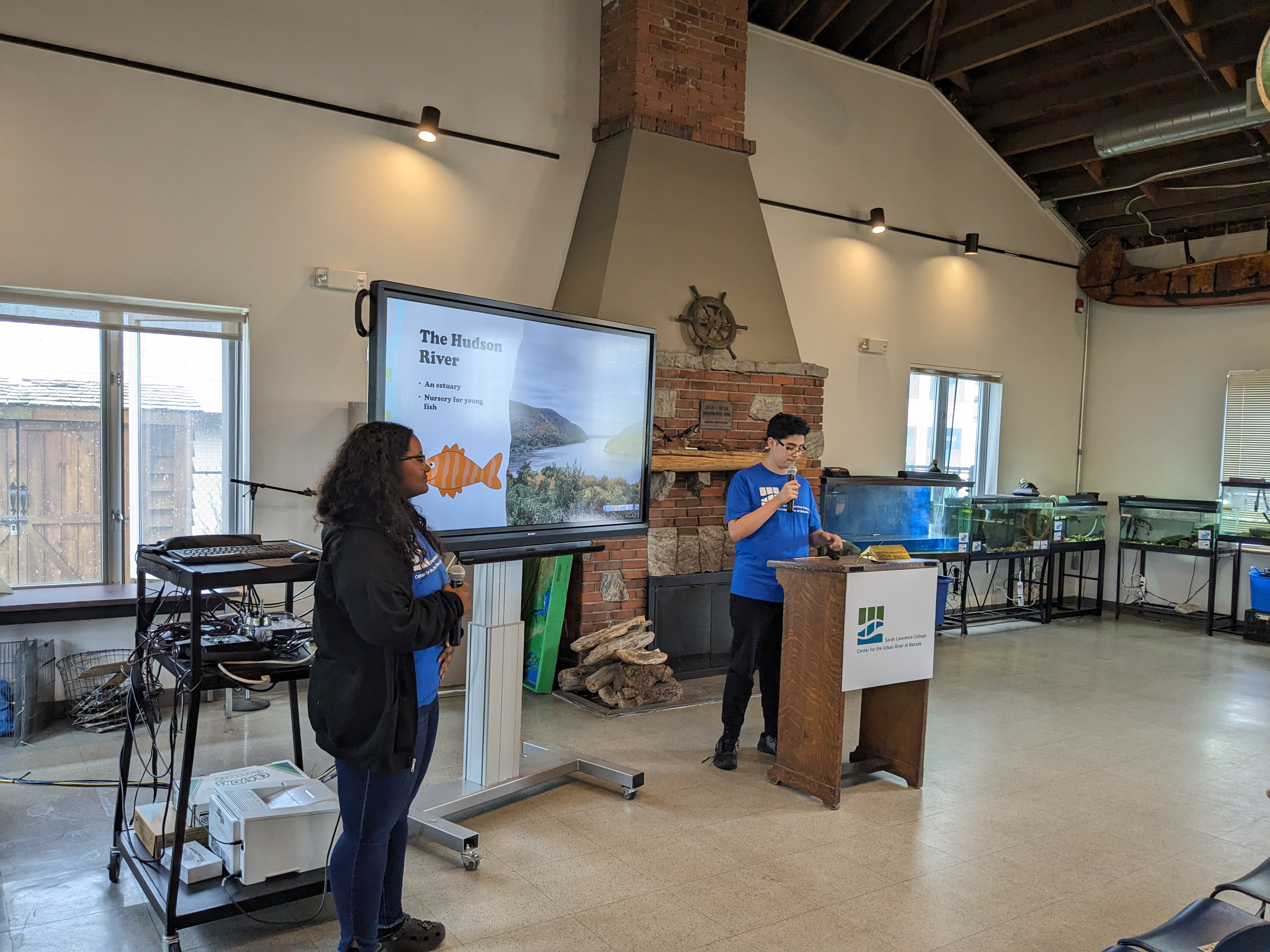EELS Team Students Share Their Hudson River Research

To celebrate Earth Day weekend over 25 people gathered at Sarah Lawrence College’s Center for the Urban River at Beczak (CURB) to learn from local high school students and enjoy the Hudson River.
The event featured presentations from CURB’s E.E.L.S (Evaluating Estuary Lateral Species) Team - 8 Yonkers high school students who’ve been conducting paid after school research at the center over 13 weeks in the fall and spring. Their research focused on the ecology of the river including monitoring fish biodiversity, tracking migrating glass eels, and using eDNA, or environmental DNA, to detect fish species presence using only water samples.
Jason Muller, CURB staff who managed the program, kicked off the event by giving an overview of the internship and a summary of the data the students collected. “It has been a pleasure to work with this cohort of Yonkers high school students during the EELS Team program. Their passion for science and river research is quite evident in their group presentations. Some of the highlights of their research included being part of a record American eel migration season, as well as catching a 20” channel catfish, the first ever caught at CURB.”
Following the student presentations CURB Director Ryan Palmer summarized the EELS Team group research project on eDNA. “Using eDNA to detect fish is an exciting new research tool and we were thrilled to be able to expose the students to it and have them perform the hands-on DNA extraction lab work. With the help of Dr. Michelle Hersh and her students’ PCR analysis on campus, we were able to get some interesting results, including detecting the mighty Atlantic Sturgeon, a species much too big to capture in our nets.”
After the presentations, participants made their way to the river to enjoy the scenery and go seining for fish, which is using a 30-foot long net to scoop up fish that are nearshore.
Funding for the E.E.L.S Team is provided by the New York State Environmental Protection Fund through a grant from the NYS DEC Hudson River Estuary Program.